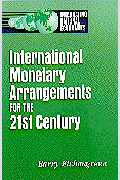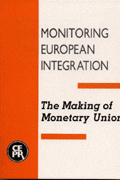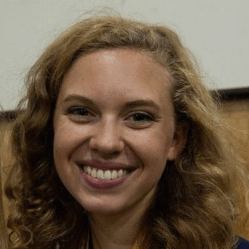Studies in this week’s Hutchins Roundup find that monetary policy may affect the natural rate of interest, pre-employment credit screening can lead to a poverty trap but banning the practice would make it harder for firms to find productive workers, and more.
Want to receive the Hutchins Roundup as an email? Sign up here to get it in your inbox every Thursday.
Monetary policy may affect the natural rate of interest
What determines the path of long-term real interest rates? While economists have traditionally turned to trends in savings, demographics, and productivity to answer this question, Claudio Borio of the Bank for International Settlements and coauthors offer a provocative answer: monetary policy. The authors argue that periods of low short-term interest rates may generate boom-and-bust financial cycles that have long-lasting effects on the real economy and equilibrium interest rates—implying the “natural” interest rate is a product of monetary policy, rather than a guidepost for it. As a result, they argue that monetary policy ought to aim to smooth the financial cycle as well as the business cycle. The authors show that an interest rate rule that responds to financial imbalances may outperform one that only responds to changes in inflation and output.
Pre-employment credit screening can lead to a poverty trap, but banning the practice would make it harder for firms to find productive workers
Many U.S. firms use pre-employment credit screenings as part of their hiring process. This may lead to a poverty trap, in which unemployed workers with poor credit are unable to find jobs but cannot improve their credit without jobs. Dean Corbae of the University of Wisconsin and Andrew Glover of the University of Texas at Austin construct a model of the labor market where good credit scores are associated with high labor productivity and firms therefore prefer to hire workers with good credit. In their model, a worker defaulting on her debt leads to a large and persistent wage loss, equivalent to 2.3 percent per month over 10 years, when firms use credit screening in the hiring process. Banning employer credit checks eliminates the poverty trap but also makes it harder for firms to identify productive workers, they say, resulting in a 13 percent increase in the average unemployment duration for the most productive workers.
Higher corporate and personal income taxes reduce innovation
Using a dataset covering inventors, firms active in research and development, and corporate and personal tax rates for much of the 20th century in the United States, Ufuk Akcigit of the University of Chicago and coauthors find that high taxes discourage both the quantity and the quality of innovation, as measured by the number of patents and patent citations, respectively. Corporate inventors are more sensitive to the corporate tax rate, while individual inventors are more sensitive to the personal income tax rate. Innovators and firms tend to locate in low tax states, compounding the effect of high taxes on individual decisions at the state level.
Chart of the week: Income for the median, full-time, year-round male worker has barely budged in 35 years; women have done better
Quote of the week:
“The past few times unemployment fell to levels as low as those projected over the next year, signs of overheating showed up in financial-sector imbalances rather than in accelerating inflation. The Federal Reserve’s assessment suggests that financial vulnerabilities are building, which might be expected after a long period of economic expansion and very low interest rates. Rising risks are notable in the corporate sector, where low spreads and loosening credit terms are mirrored by rising indebtedness among corporations that could be vulnerable to downgrades in the event of unexpected adverse developments. Leveraged lending is again on the rise; spreads on leveraged loans and the securitized products backed by those loans are low, and the Board’s Senior Loan Officer Opinion Survey on Bank Lending Practices suggests that underwriting standards for leveraged loans may be declining to levels not seen since 2005,” says Lael Brainard, a member of the Federal Reserve Board of Governors.
“While tightening resource utilization and loose financial conditions present upside risks, recent foreign developments present downside risks. Trade policy has introduced uncertainty. Growth in Europe and Japan has moderated from its strong pace of last year, and political risks have reemerged in countries such as Italy. China is contending with deleveraging and deceleration as well as a challenging trade environment. As U.S. growth has pulled away from foreign growth, in part reflecting fiscal policy divergence, expectations of monetary policy divergence strengthened, contributing to upward pressure on the dollar earlier this year. The resulting currency adjustments are compounding challenges faced by some emerging market economies, along with a complicated and unpredictable trade environment and gradually increasing interest rates. Although capital flow reversals have been contained to several notably vulnerable countries so far, I am attentive to the risk that a pullback from emerging markets could broaden.”











Commentary
Hutchins Roundup: The natural rate of interest, pre-employment credit screening, and more
September 13, 2018